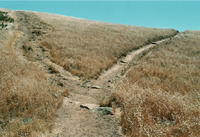Items
Site
The Medicine Chest
keywords is exactly
Paul Auster
-

Weighing Smoke
PAUL That’s the man. Well, Raleigh was the person who introduced tobacco in England, and since he was a favourite of the Queen’s – Queen Bess, he used to call her – smoking caught on as a fashion at court. I’m sure Old Bess must have shared a stogie or two with Sir Walter. Once, he made a bet with her that he could measure the weight of smoke. DENNIS You mean, weigh smoke? PAUL Exactly. Weigh smoke. TOMMY You can’t do that. It’s like weighing air. PAUL I admit it’s strange. Almost like weighing someone’s soul. But Sir Walter was a clever guy. First, he took an unsmoked cigar and put it on a balance and weighed it. Then he lit up and smoked the cigar, carefully tapping the ashes into the balance pan. When he was finished, he put the butt into the pan along with the ashes and weighed what was there. Then he subtracted that number from the original weight of the unsmoked cigar. The difference was the weight of the smoke. TOMMY Not bad. That’s the kind of guy we need to take over the Mets. PAUL Oh, he was smart, all right. But not so smart that he didn’t wind up having his head chopped off twenty years later. (Pause) But that’s another story. -

Or
"The processes of digression and diversion have much in common with what the writer Ross Chambers (1999) calls ‘loiterature’. Chambers investigates the digressive, category-blurring genre of writing found in works such as Nicholson Baker’s 'The mezzanine', Paul Auster’s 'City of glass' and Laurence Sterne’s 'Tristam Shandy'. Loiterly writing, according to Chambers, disarms criticism by providing a moving target, shifting as its own divided attention constantly shifts. Criticism depends on the opportunity to discriminate and hierarchise, determining what is central and what is peripheral (Chambers 1999: 9), which this form eludes by resisting contextualisation or singular categorisation. Loiterature promotes sites of endless intersection, where attention is always divided between one thing and some other thing, always willing and able to be distracted, contrasting ‘the disciplined and the orderly, the hierarchical and the stable, the methodical and the systematic’ (Chambers 1999: 10). In contrast to methods of science that seek to stabilise objects within taxonomic systems or that require the formulation of hypotheses to provide direction for experimentation and a basis for concrete outcomes, the processes of curatorship and artmaking revel in rerouting and redirecting and in diversion and digression" (Liebenberg 2021: 286).


